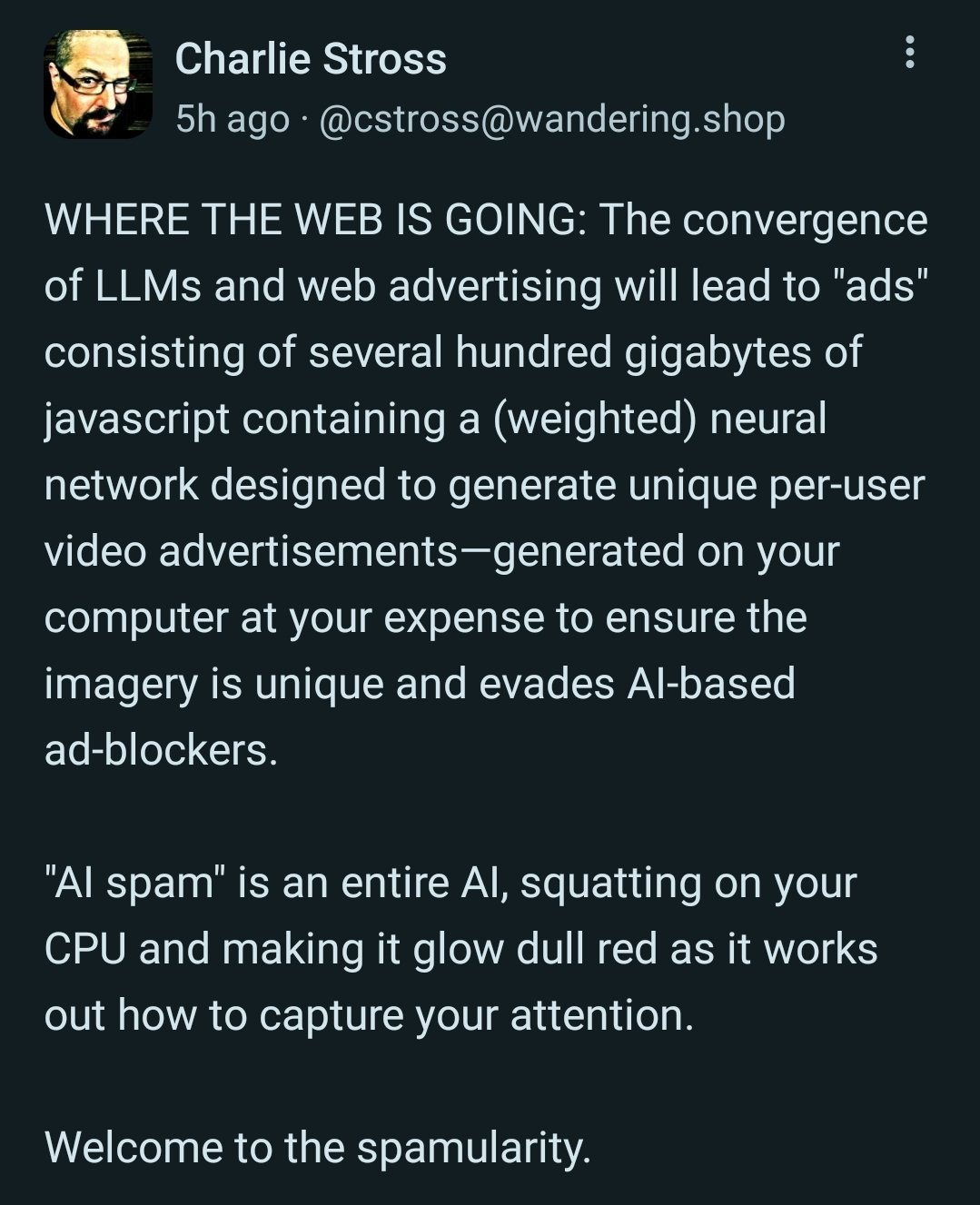this post was submitted on 31 Aug 2024
881 points (98.6% liked)
196
16801 readers
1680 users here now
Be sure to follow the rule before you head out.
Rule: You must post before you leave.
founded 2 years ago
MODERATORS
you are viewing a single comment's thread
view the rest of the comments
view the rest of the comments

Then Alphabet will come up with a new bullshit idea, "remove the limits for 'trusted' advertisers" so that they can inject more code than allowed as long as they keep paying for their ad "partnership"
That's why we need to fight against chromium monopoly
I dare anyone to even just compile a document containing all the standards you'd need to implement
This is purely a nitpick, but WASM lets you run WASM instructions not native cpu instructions. Its does let you get much closer to the speed of running native instructions
I really hope you don't know about this 4GB limit specifically because you've run up against it while doing anything real-world.
Canvas code can get out of hand very quickly if not done right
I've made exactly two projects that utilized canvas, both of which I "released" in a sense. One contains 248kb of JS code and the other contains 246kb. That's before it's minified.
So I guess that means I did my canvas code right. Lol.
(Unless you meant 3d canvas or WebGL stuff with which I haven't played.)
I think they're referring to the memory footprint, not the source code file size.
Code size isn't really related to how much graphics data you're throwing in RAM
It would just slowly accumulate it over time, little bit here, little bit there until it has a fleet of stuff to serve you in a queue, so while you're making more and more bits for more videos, it's serving you videos while you make bits of new videos and sharing them over websockets that JS CDNS force-feed our browsers to centralized servers to offload similar users with similar ad-tastes to also help compile.
Some shit like that. Adtech is cyber terrorism. Never forget.